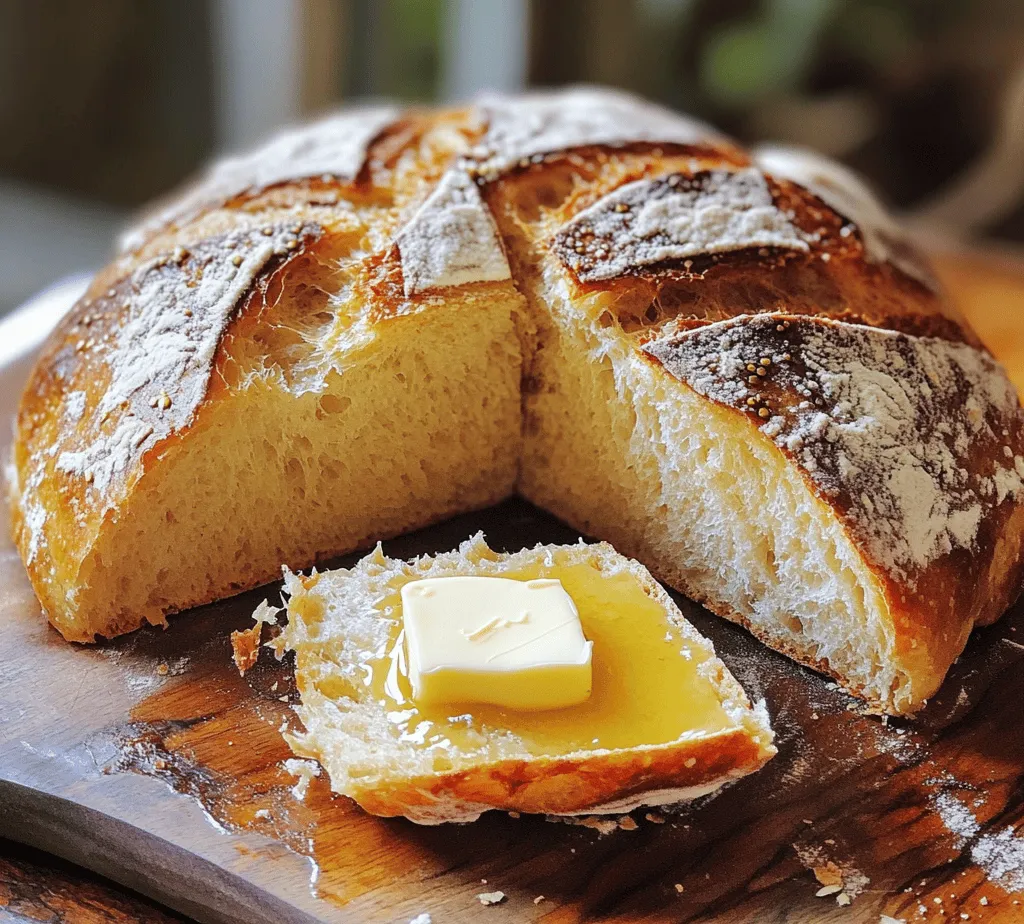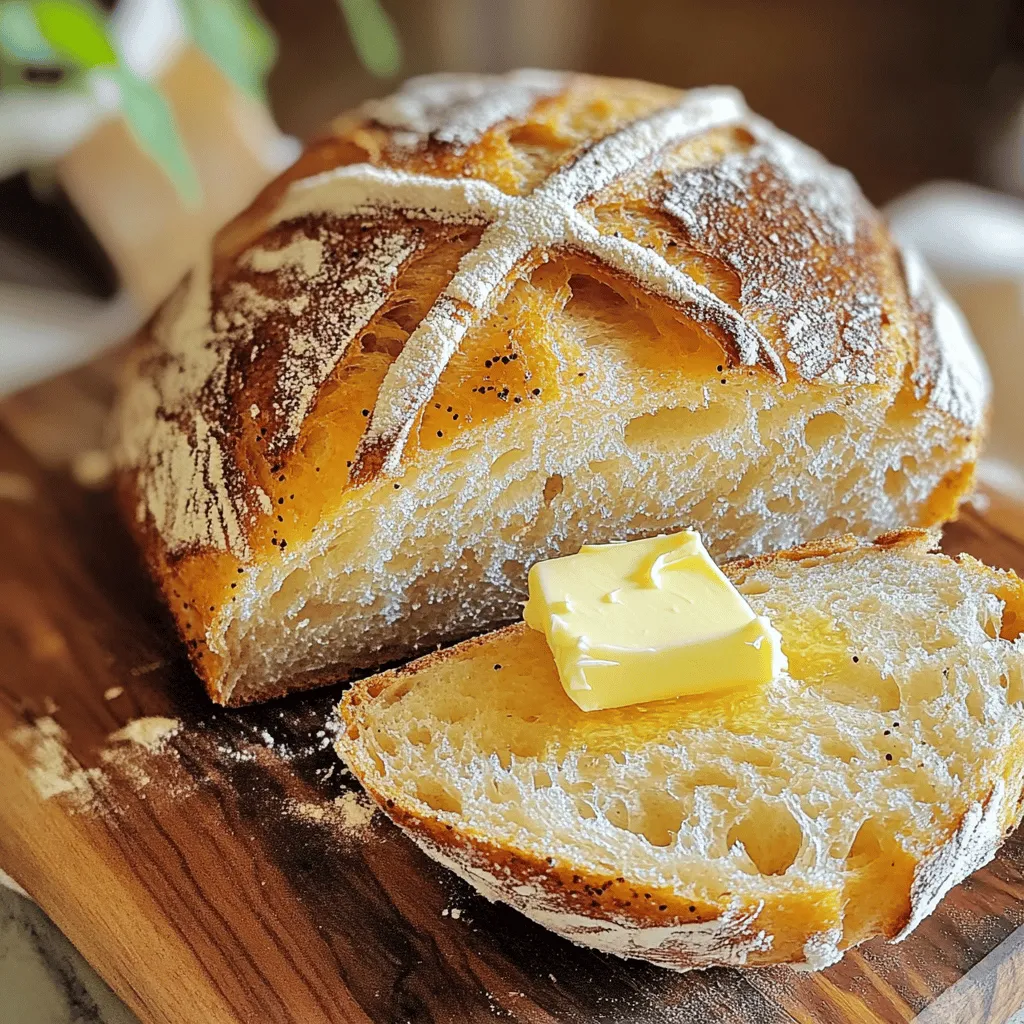Introduction
Sourdough bread holds a special place in the hearts of bakers and food enthusiasts alike. With its tangy flavor, chewy crust, and airy crumb, sourdough is not just a loaf of bread; it’s a testament to the art and science of baking. This ancient method of bread-making has revitalized in recent years, as more people have embraced the process of cultivating their own sourdough starters, exploring the magic of fermentation, and crafting delicious loaves from scratch.
Among the many variations of sourdough, rye bread stands out for its deep, earthy flavor and health benefits. Rye flour, derived from the rye grain, is packed with nutrients and has a lower gluten content than wheat flour, making it an excellent choice for those seeking a denser yet satisfying bread. The inclusion of rye flour not only enriches the bread’s flavor but also offers a range of health benefits, including improved digestion and lower blood sugar levels.
Adding caraway seeds to the mix elevates this bread to a new level. Caraway seeds have a distinctive flavor that is often described as nutty and slightly sweet, with a hint of anise. Historically, they have been used in baking for centuries, particularly in Eastern European cuisines. Their warm, aromatic flavor complements the richness of rye, creating a harmonious balance that is both comforting and invigorating.
In this article, we aim to provide a comprehensive guide to making light and fluffy sourdough rye bread with caraway seeds. Whether you are a seasoned baker or just starting out, this recipe will walk you through each step, ensuring that you achieve a delicious loaf that you can be proud of.
Understanding the Ingredients
Key Ingredients in Sourdough Rye Bread
Creating the perfect sourdough rye bread begins with understanding the key ingredients that contribute to its unique texture, flavor, and nutritional profile. Each component plays a vital role in the overall success of the bread.
1. Active Sourdough Starter:
At the heart of any sourdough recipe is the sourdough starter. A healthy starter is essential for fermentation, providing the natural yeast and bacteria needed for leavening. Maintaining an active starter involves regular feedings with flour and water, creating a robust culture that can effectively rise your bread. The wild yeast present in the starter is what gives sourdough its characteristic tang and fluffy texture.
2. Warm Water:
Water is crucial in activating the yeast in your starter and hydrating the flour. The ideal temperature for warm water is between 90°F and 110°F (32°C to 43°C). Water that is too hot can kill the yeast, while water that is too cold may inhibit fermentation. Always use a thermometer to ensure the perfect temperature for optimal yeast activity.
3. Rye Flour vs. All-Purpose Flour:
The choice of flour significantly influences the texture and flavor of your bread. Rye flour is denser and has a higher fiber content compared to all-purpose flour. This results in a heartier loaf with a rich, earthy flavor. While all-purpose flour can be used to lighten the dough, using 100% rye flour will yield a more authentic and robust rye bread experience. Additionally, rye flour contains different types of gluten, which can affect how the dough rises and its overall structure.
4. Caraway Seeds:
Caraway seeds are the star of this recipe, providing a distinctive flavor that is both aromatic and slightly sweet. Beyond their flavor benefits, caraway seeds also boast various health properties, including aiding digestion and offering anti-inflammatory benefits. Their unique taste pairs beautifully with the sour notes of the rye bread, enhancing the overall flavor profile.
5. Salt and Honey/Maple Syrup:
Salt is a critical ingredient in bread-making as it strengthens gluten structure, enhances flavor, and controls fermentation. It is essential to use the right amount; too much salt can inhibit yeast activity, while too little may result in bland bread. Honey or maple syrup can be added for a touch of sweetness, balancing the flavors while also promoting fermentation by providing additional sugars for the yeast to consume.
Preparation Process
Step-by-Step Instructions for Making Sourdough Rye Bread
Now that we’ve explored the significance of each ingredient, it’s time to dive into the preparation process. Making sourdough rye bread may seem daunting, but by following these step-by-step instructions, you will find that it is quite manageable and incredibly rewarding.
1. Mixing the Starter and Water:
Begin by measuring out your active sourdough starter and warm water. In a large mixing bowl, combine the starter and warm water, using a whisk or a fork to create a smooth mixture. Ensure that the starter is fully dissolved in the water, as this will facilitate even distribution throughout the dough.
2. Combining Dry Ingredients:
In a separate bowl, measure out your rye flour and salt. It is crucial to evenly distribute the salt throughout the flour to prevent any clumping. If you’re using caraway seeds, add them to the dry ingredients at this stage. This allows the seeds to be evenly incorporated into the dough, ensuring that each bite is bursting with flavor.
3. Forming the Dough:
Gradually add the dry mixture to the starter and water mixture, stirring with a wooden spoon or spatula until a rough dough forms. The dough will be sticky due to the high hydration level from the rye flour. Do not be tempted to add too much additional flour at this point; this sticky texture is expected and will help create a light and fluffy crumb.
4. Kneading:
Once the dough has formed, it’s time to knead. Turn the dough out onto a lightly floured surface. Since rye dough is typically stickier than wheat dough, consider using a technique called the slap and fold method. This involves lifting the dough and slapping it onto the counter, then folding it over itself. Repeat this process for about 8-10 minutes, or until the dough is smooth and elastic. The goal is to develop the gluten structure without overworking the dough.
Fermentation and Rising
Following the initial mixing and kneading, the fermentation process begins, which is vital for developing the flavor and texture of your sourdough rye bread.
1. The Importance of Resting Times:
Allow the dough to rest in a lightly greased bowl covered with a damp cloth or plastic wrap. This resting period is essential for fermentation. During this time, the yeast will consume the sugars in the flour, producing carbon dioxide and causing the dough to rise.
2. First Rise:
Let the dough rise in a warm, draft-free area for about 4 to 6 hours, or until it has doubled in size. The exact time may vary based on the ambient temperature and the strength of your starter. To monitor the rise, gently poke the dough; if it springs back slowly, it’s ready for the next step.
3. Shaping the Loaf:
Once the dough has risen, turn it out onto a lightly floured surface. Gently flatten the dough to release some of the gases, then shape it into a round loaf. To do this, fold the edges of the dough towards the center, creating tension on the surface. Place the shaped loaf seam-side down on a floured proofing basket or a parchment-lined baking sheet for its second rise.
With the dough shaped and ready, it will undergo another resting period before baking. This second rise is critical for developing the final flavor and texture of the loaf. By allowing the dough to rest again, you ensure a light and fluffy interior, complemented by the nutty taste of rye and the aromatic essence of caraway seeds.
Stay tuned for the next part of this article, where we will delve into the baking process, tips for achieving the perfect crust, and additional insights to enhance your sourdough rye bread experience.

Baking the Bread
Preheating the Oven: Why It’s Crucial for Achieving the Perfect Crust
Preheating your oven is a fundamental step in baking bread, and for good reason. When you place your dough in a hot oven, it immediately begins to undergo what is called “oven spring,” which is the rapid rise of the dough. This is essential for achieving that light and fluffy texture we desire in sourdough rye bread. A properly preheated oven ensures that the crust develops quickly, forming a protective barrier around the loaf that locks in moisture and prevents it from becoming dense. Aim to preheat your oven to 450°F (232°C) for at least 30 minutes before baking. This gives the oven enough time to reach the desired temperature and ensures even heat distribution.
Scoring Techniques: How Scoring Affects the Final Loaf
Scoring your bread, or making shallow cuts on the surface before baking, serves multiple purposes. First, it allows for controlled expansion during baking, helping to prevent the loaf from bursting in unexpected places. This technique is particularly important for sourdough rye bread, as the dense texture can create pressure during baking. Second, scoring enhances the bread’s appearance, creating an artisanal look that elevates homemade baking.
There are various scoring patterns you can choose from, including straight lines, a crosshatch, or a simple “X.” To score effectively, use a sharp razor blade or a bread lame. Hold the blade at a 30-degree angle and make quick, decisive cuts about 1/4 inch deep. This technique not only improves the aesthetics but also contributes to a better crust and texture.
Baking Time and Temperature: Understanding the Science Behind Baking Bread
The baking time and temperature are crucial for achieving the desired results in your sourdough rye bread. After preheating your oven, place your loaf on a baking stone or a preheated baking sheet. The initial burst of heat will help the bread rise, while the temperature should remain at 450°F (232°C) for the first 20 minutes. During this phase, the crust will begin to form.
After 20 minutes, reduce the temperature to 400°F (204°C) and continue baking for an additional 25 to 30 minutes. This gradual decrease in temperature helps to prevent the crust from becoming overly dark while allowing the inside to cook through. The total baking time will typically range from 45 to 55 minutes, depending on your oven’s characteristics and the size of your loaf.
Identifying Doneness: Tips for Ensuring Proper Baking Through the Hollow Sound Test
To determine if your sourdough rye bread is fully baked, the hollow sound test is a reliable method. Gently tap the bottom of the loaf with your knuckles. If it produces a hollow sound, this is a good indication that your bread is done. Additionally, you can use a digital thermometer; the internal temperature should be around 200°F (93°C) when fully baked.
Once baked, allow the bread to cool on a wire rack for at least an hour before slicing. This cooling time is crucial as it allows the bread to finish cooking internally and helps develop the crumb structure.
Presentation and Serving Suggestions
Ideal Ways to Serve Light and Fluffy Sourdough Rye Bread
Your homemade sourdough rye bread deserves to be showcased beautifully. Serve it sliced on a wooden board with a variety of spreads and toppings for a delightful presentation. The rustic appearance of the bread pairs nicely with simple serving methods, allowing its unique flavor to shine through.
Suggestions for Spreads: Butter, Olive Oil, and Herb Garnishes
When it comes to spreads, the options are plentiful. For a classic approach, serve your sourdough rye bread with a generous pat of unsalted butter, allowing it to melt into the warm bread. Alternatively, extra virgin olive oil drizzled over the bread enhances its flavor profile while providing a healthy fat source. To elevate your serving, consider herb-infused oils or compound butters, which can add a burst of flavor.
If you’re feeling adventurous, experiment with spreads like hummus or tzatziki, which pair wonderfully with the earthy tones of rye. For a gourmet touch, consider using flavored cream cheese or whipped feta, topped with fresh herbs or microgreens.
Pairing Ideas: Complementary Foods and Beverages
Sourdough rye bread pairs exceptionally well with a variety of foods. Consider serving it alongside hearty soups, stews, or salads. The robust flavor of the rye complements dishes like a creamy potato leek soup or a tangy beet salad. For a charcuterie board, include cured meats, cheeses, and pickles to create a delightful spread that enhances the bread’s unique profile.
When it comes to beverages, consider serving your sourdough rye bread with a glass of robust red wine, such as a Cabernet Sauvignon or a rich Merlot. If you prefer non-alcoholic options, a well-brewed cup of herbal tea or a refreshing sparkling water with lemon can also complement the meal beautifully.
Creative Serving Ideas for Special Occasions
For special occasions, consider using your sourdough rye bread as a base for canapés. Slice the bread into bite-sized pieces, lightly toast them, and top with a variety of toppings such as smoked salmon, cream cheese, and capers or roasted red peppers with feta cheese. This not only makes for a visually appealing presentation but also allows guests to enjoy the unique flavor of your bread in an elegant way.
For a rustic brunch, serve your sourdough rye bread alongside a selection of artisanal cheeses, fresh fruits, and cured meats. This buffet-style presentation encourages guests to mix and match, ensuring everyone can find their perfect flavor combination.
Health Benefits of Sourdough Rye Bread
Nutritional Analysis of Key Ingredients
Sourdough rye bread is not only delicious but also offers a variety of health benefits. The primary ingredient, rye flour, is rich in nutrients and fiber, making it a wholesome choice for your diet. Rye flour contains essential vitamins such as B vitamins, which play a crucial role in energy metabolism and brain function. Additionally, it is a good source of minerals like iron and magnesium.
Benefits of Rye Flour: Fiber Content, Vitamins, and Minerals
Rye flour is particularly high in soluble and insoluble fiber, which can aid digestion and promote a feeling of fullness. This fiber content helps regulate blood sugar levels and can contribute to heart health by lowering cholesterol levels. Furthermore, the presence of antioxidants in rye flour can help combat inflammation and oxidative stress in the body.
Advantages of Sourdough Fermentation: Enhanced Digestibility and Probiotic Potential
The fermentation process involved in making sourdough bread offers additional health benefits. Sourdough fermentation enhances the bioavailability of nutrients, making it easier for the body to absorb vitamins and minerals. Furthermore, the presence of lactic acid bacteria during fermentation can contribute to gut health by promoting a balanced microbiome.
This probiotic potential not only aids digestion but may also have a positive impact on immune function. Many people who have difficulty tolerating conventional bread find that they can enjoy sourdough without adverse effects, thanks to the fermentation process that breaks down gluten.
Caraway Seeds: Additional Health Benefits and Culinary Uses
Caraway seeds, a signature ingredient in sourdough rye bread, not only add a distinct flavor but also come with their own health benefits. These seeds are rich in antioxidants and have been traditionally used to support digestive health. They may also help alleviate bloating and gas, making them a perfect complement to the fiber-rich rye flour.
Caraway seeds can be used in various culinary applications, from seasoning roasted vegetables to adding flavor to stews and soups. Their warm, earthy flavor enhances the overall taste of your sourdough rye bread, making it a delightful addition to your baking repertoire.
Common Issues and Troubleshooting
Potential Challenges in Baking Sourdough Bread
Even seasoned bakers can encounter challenges when making sourdough rye bread. Understanding potential issues can help you troubleshoot effectively and achieve a perfect loaf every time.
Dough Too Sticky or Dry: Causes and Solutions
If your dough is too sticky, it could be due to excess water or humidity in the environment. To remedy this, gradually add more flour while mixing until the dough reaches a workable consistency. On the other hand, if the dough feels too dry, you may need to add a bit more water, a tablespoon at a time, until it becomes pliable.
Inadequate Rise: Factors Affecting Fermentation and How to Fix Them
An inadequate rise can be frustrating, but several factors can contribute to this issue. Ensure that your sourdough starter is active and bubbly before using it in your dough. Additionally, the fermentation environment plays a critical role; a warm, draft-free area is ideal for allowing the dough to rise properly. If your kitchen is cold, consider placing the dough in a slightly warmed oven (turned off) or near a warm spot in your home.
Overbaking or Underbaking: How to Avoid Common Pitfalls
Overbaking or underbaking your sourdough rye bread can lead to undesirable textures. To avoid these pitfalls, pay close attention to the baking time and temperature, and use the hollow sound test and thermometer to check for doneness. Remember that every oven is different, so it may take a few tries to find the perfect baking conditions for your specific setup.
Conclusion
Light and fluffy sourdough rye bread with caraway seeds offers a unique combination of flavor, texture, and health benefits that make it a delightful addition to any meal. From the preheating process to the final presentation, each step in the baking process contributes to the loaf’s overall quality.
Encourage yourself to embark on this baking adventure, and experience the satisfaction that comes from creating something truly special in your kitchen. The joy of homemade bread extends beyond just taste; it encompasses the love and care you put into each loaf. As you slice into your warm, fragrant sourdough rye bread, savor the moment and let it become a cherished part of your everyday meals. Whether enjoyed with a simple spread or as the foundation for an elaborate dish, your sourdough rye bread will surely impress and delight anyone who has the pleasure of tasting it.



